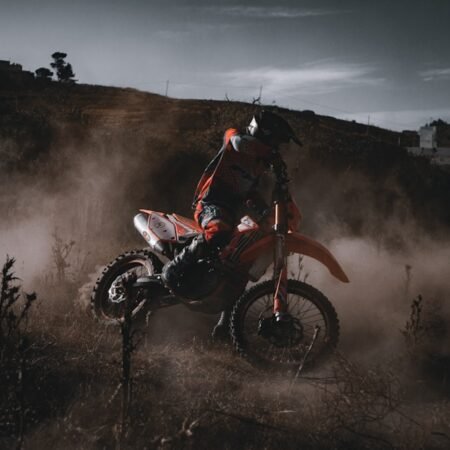When it comes to choosing the right camera, it’s important to first understand your photography needs. Are you a professional photographer looking for a high-quality camera for your business, or are you an amateur photographer looking for a camera to capture special moments with friends and family? Understanding your photography needs will help you narrow down your options and make a more informed decision when it comes to purchasing a camera. If you’re a professional photographer, you may need a camera with advanced features and capabilities, while an amateur photographer may be more interested in ease of use and affordability. Consider what types of photography you will be doing most often, as this will also influence the type of camera that will best suit your needs.
For example, if you’re primarily interested in landscape photography, you may want a camera with a wide-angle lens and high resolution for capturing detailed scenery. On the other hand, if you’re more interested in portrait photography, you may want a camera with a good autofocus system and the ability to create a shallow depth of field for stunning bokeh effects. Understanding your photography needs will help you make a more informed decision when it comes to choosing the right camera for you.
Types of Cameras: DSLR, Mirrorless, Point-and-Shoot
There are several different types of cameras to choose from, each with its own set of features and capabilities. The most common types of cameras are DSLR (digital single-lens reflex), mirrorless, and point-and-shoot. DSLR cameras are known for their versatility and high image quality, making them a popular choice among professional photographers. They typically have interchangeable lenses and advanced manual controls, allowing for greater creative control over your images. Mirrorless cameras, on the other hand, are smaller and lighter than DSLRs, making them a great option for travel and street photography. They also offer electronic viewfinders and continuous autofocus, making them a popular choice for videographers as well.
Point-and-shoot cameras are the most compact and affordable option, making them a great choice for casual photographers and beginners. They typically have fixed lenses and automatic settings, making them easy to use for capturing everyday moments. Each type of camera has its own set of advantages and disadvantages, so it’s important to consider your photography needs and preferences when choosing the right type of camera for you.
Considerations for Different Photography Styles: Landscape, Portrait, Action, etc.
Different photography styles require different features and capabilities from a camera. For example, landscape photography often requires a wide-angle lens and high resolution for capturing detailed scenery, while portrait photography may require a good autofocus system and the ability to create a shallow depth of field for stunning bokeh effects. Action photography, on the other hand, may require a camera with fast continuous shooting and autofocus capabilities to capture fast-moving subjects. It’s important to consider the specific requirements of your preferred photography style when choosing a camera.
If you’re primarily interested in landscape photography, you may want to prioritize a camera with a wide-angle lens and high resolution for capturing detailed scenery. On the other hand, if you’re more interested in portrait photography, you may want to prioritize a camera with a good autofocus system and the ability to create a shallow depth of field for stunning bokeh effects. Understanding the specific requirements of your preferred photography style will help you make a more informed decision when it comes to choosing the right camera for you.
Features to Look for in a Camera: Megapixels, Lens Options, Image Stabilization, etc.
When choosing a camera, there are several key features to consider that can greatly impact the quality of your images. One important feature to consider is megapixels, which refers to the resolution of the images that the camera can capture. Generally speaking, the more megapixels a camera has, the higher the resolution of the images it can capture. This can be important if you plan on printing your images or if you want to crop them without losing detail.
Another important feature to consider is lens options. If you’re interested in exploring different types of photography, such as landscape or portrait photography, having the option to use different lenses can greatly expand your creative possibilities. Some cameras have interchangeable lenses, allowing you to switch between wide-angle, telephoto, and macro lenses depending on your needs.
Image stabilization is another important feature to consider, especially if you plan on shooting in low light or capturing fast-moving subjects. Image stabilization helps reduce blur caused by camera shake, resulting in sharper images. Some cameras have in-body image stabilization, while others have it built into the lens.
Budgeting for Your Camera Purchase
When it comes to purchasing a camera, it’s important to consider your budget and how much you’re willing to spend. Cameras come in a wide range of prices, from affordable point-and-shoot cameras to high-end professional DSLRs. It’s important to set a budget that aligns with your photography needs and preferences. If you’re a professional photographer looking for a high-quality camera for your business, you may be willing to invest more money in a camera with advanced features and capabilities. On the other hand, if you’re an amateur photographer looking for a camera to capture special moments with friends and family, you may be more interested in affordability and ease of use.
It’s also important to consider additional costs such as lenses, memory cards, and other accessories when budgeting for your camera purchase. Interchangeable lens cameras may require additional lenses to suit different types of photography, while point-and-shoot cameras may require memory cards with larger storage capacity for capturing more images and videos. By considering these additional costs upfront, you can make a more informed decision when it comes to budgeting for your camera purchase.
Additional Accessories to Enhance Your Photography Experience
In addition to the camera itself, there are several accessories that can enhance your photography experience. One important accessory to consider is lenses. Interchangeable lens cameras allow you to switch between different lenses depending on your needs, such as wide-angle, telephoto, and macro lenses. Having a variety of lenses at your disposal can greatly expand your creative possibilities and allow you to explore different types of photography.
Another important accessory to consider is a tripod. A tripod can help stabilize your camera and reduce blur caused by camera shake, especially when shooting in low light or capturing long exposures. It can also be useful for framing your shots and capturing steady video footage.
Memory cards are another essential accessory for storing your images and videos. It’s important to choose memory cards with sufficient storage capacity and fast read/write speeds to ensure smooth performance when capturing images and videos.
Seeking Professional Advice and Reviews
When it comes to choosing the right camera for your needs, it can be helpful to seek professional advice and read reviews from other photographers. Professional photographers can offer valuable insights into different types of cameras and their capabilities based on their own experiences. They can also provide recommendations based on specific photography styles and preferences.
Reading reviews from other photographers can also provide valuable information about the performance and reliability of different cameras. Look for reviews from reputable sources that provide detailed information about the features and capabilities of different cameras, as well as real-world examples of images captured with each camera.
By seeking professional advice and reading reviews from other photographers, you can gain valuable insights into different types of cameras and make a more informed decision when it comes to choosing the right camera for your needs.








